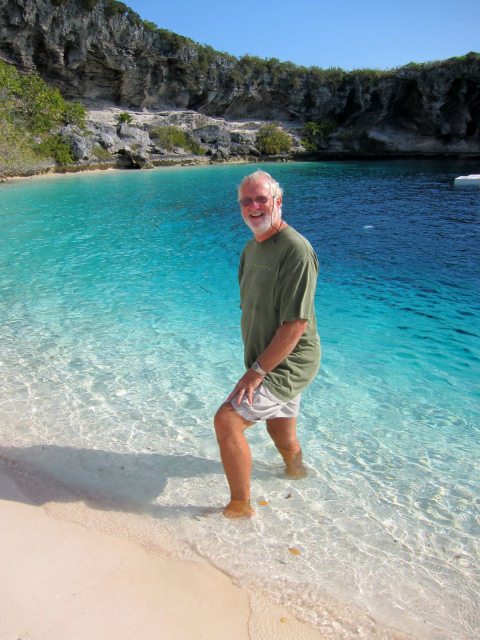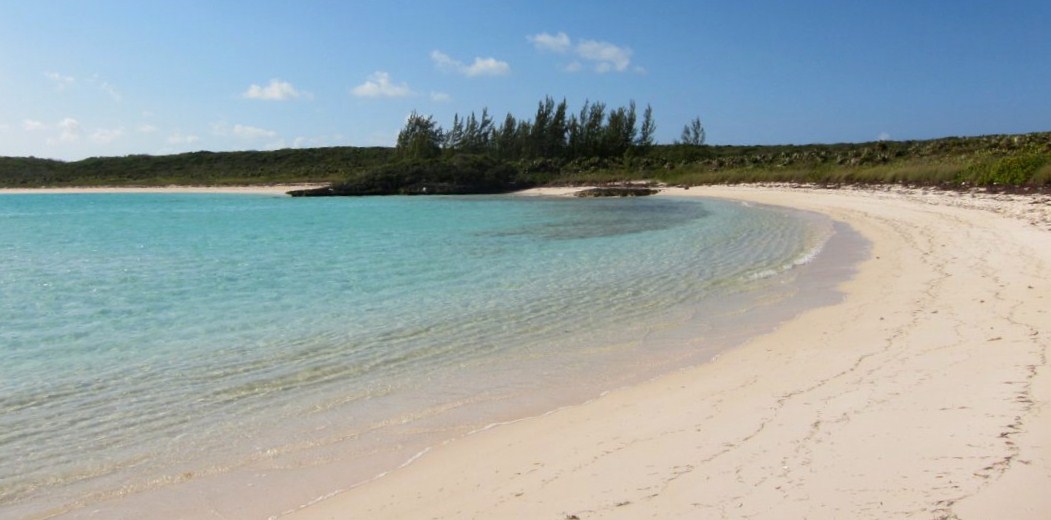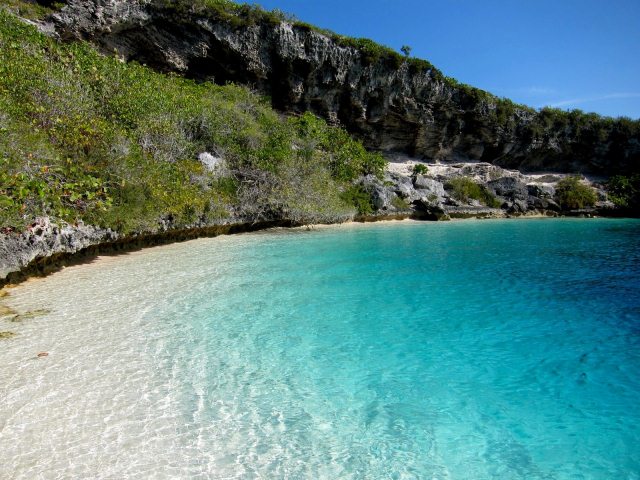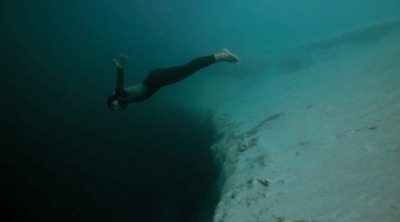Dean's Blue Hole

|
Dean's Blue
Hole
 We left the main road, the red information sign on the left and a 'proper' sign on the right. The wiggly track
that ended with sand, we got out and walked a short distance and found ourselves
on a deserted beach. No idea what to expect, we turned left and this was our
first sight - nothing exceptional we at first thought.
 A little closer, the hot sun came out
and WOW. Nothing could have prepared us for what we saw. Bear posed for a shot, his back foot slipping back on this
small, incredibly steep shelf. The colours amazing. Dean's Blue Hole is the world's deepest known seawater blue
hole. As the sign had told us, it plunges 663 feet in a bay
west of Clarence
Town, Long
Island, Bahamas.
I love to type that, we still pinch ourselves that we are indeed in The
Pyjamas.
 We would have been chuffed just to have visited the bay, seen here to the right of Dean's Blue Hole
We clambered up the steep coral rock that forms an 'amphitheatre' for a better view, sadly the sun would not comply by hiding for a minute or two. The platform is set for free diving competitions
History: The full depth of the cave was reached by Jim King in 1992. In April 2010, William Trubridge broke a free-diving world record in the blue hole reaching a depth of 302 feet without the use of fins (Constant Weight Without Fins), on the 14th of December, 2010, he swam to a depth of 100 metres on a single breath using only his hands and feet for propulsion, while many divers use weights to quicken their descent or inflatable bags to bring them to the surface quickly.
 Formation: Blue hole is a term which often is given to sinkholes filled with water, with the entrance below the water level. They can be formed in different karst processes, for example, by the rainwater soaking through fractures of limestone bedrock onto the water table. Sea level here has changed: for example, during the glacial age during the Pleistocene epoch (ice age), some 15,000 years ago, sea level was considerably lower. The maximum depth of most other known blue holes and sinkholes is 360 feet, which makes the 663 feet depth of Dean's Blue Hole quite exceptional. Dean's Blue Hole is roughly circular at the surface, with a diameter ranging from 82 - 115 feet. After descending 66 feet, the hole widens considerably into a cavern with a diameter of 330 feet.
 Two examples of deeper sinkholes are found at Zacaton in Mexico which is 1,099 feet and Pozzo del Merro in Italy 1,286 feet, Dean's Blue Hole though is the deepest known sinkhole with the entrance below the sea level.

ALL IN ALL EXCEPTIONAL NATURAL BEAUTY STUNNING AT FIRST SIGHT |


